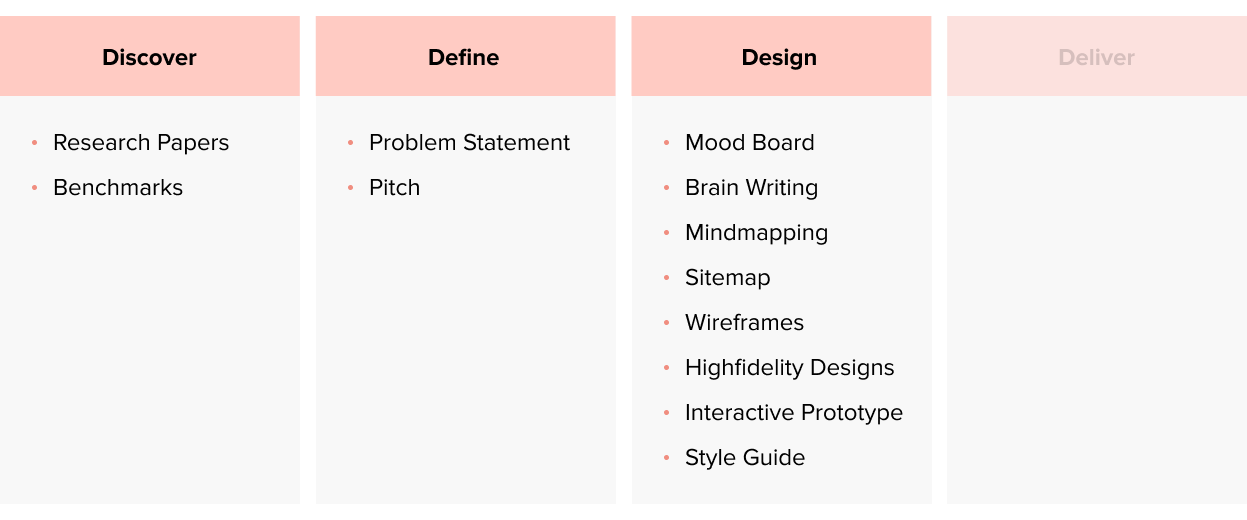Scratch That
Apr 2017 – Sep 2017 • Design of a Psycho-Educational App to Increase Low Self-Esteem
The Challenge
Scratch that is a fictional app created for my bachelor thesis. I was free to pick any topic & discover how to solve it. I decided to focus on low self-esteem, as it’s a personal struggle I have dealt with for years and saw the opportunity to explore it deeper. I worked on the project on my own.
Problem 🔥
Low self-esteem has great detriments to a person’s life and can leave them stuck in a vicious cycle. Psycho-education is not accessible to everyone & many mental health apps are flawed.
Solution 💡
A step by step program, that can be easily integrated into one's routine, having the potential for long-term success.
The Process
Research & Benchmark Insights
Insight #1
Self-destructive views lead to vicious cycles. To break them, it is necessary to raise awareness of causes and consequences.
Insight #2
To rewire ones’ brain and create new healthy behaviors, it is necessary to practice daily, to have long-term results.
Insight #3
To raise levels of self-efficacy, the tasks at hand need to be small and manageable.
Insight #4
Social upward comparison strengthens incremental beliefs, which motivate people to keep improving themselves.
Insight #5
Misinformation & lack of transparency is an issue in many mental health apps.
Insight #6
A common pattern in mental health apps is overly positive imagery & content.
The Concept & Pitch
The Design
Make complex content easily consumable
To reduce friction, all the user has to do is show up and listen to a short podcast of 5-10 minutes. It’s the main functionality stretching over the entire viewport and after the users have completed the daily podcast, a new session is unlocked by the next day.
Make content actionable
Creating small & manageable daily challenges that complement the podcast will help raise levels of self-efficacy and ensure a better incorporation of the learned content into ones’ routine. Right after the podcast is done, the UI adjusts to reveal the challenge, by making it appear above the fold.
Display Related Content
By swiping down, users can see related, credible content in the form of articles, quotes and videos. This enables users to dig deeper and in addition can create social upward comparison, when displaying success stories.
Credibility & transparency
The podcasts & challenges should be created by therapists. It should be clear who creates the content and what sources are used. This is easily accessible in the more tab.
The Prototype
Takeaways
Even if not required for a project, do the research and confirm your hypothesis
Don’t skip on usability testing’s, even if you don’t have a lot of time to adjust the designs
The color scheme was picked so dark & muted on purpose, yet the concept behind the “embracing the dark & twisty thoughts & feelings” might still make the app visually unappealing
One examiner suggested having the colors become lighter & brighter with each completed session
The terminology of “packs” and “sessions” might be confusing and unclear, it would have been smart to test potential user’s mental model
The start page with the podcast has various issues e.g. unclear icons, too many titles, unclear session picker
Credits
Icons: The Ultimate by Iconnice, Essential Set by Madebyolver, Multimedia Collection by Gregor Cresnar
Images: Screenshot of www.youtube.com/watch?v=Ks-_Mh1QhMc, Eye by David Lienhard
iPhone Mockups: iPhone 7 Psd Jet Black Mockup by Pixeden, iPhone 7 Mockup by Ramotion





